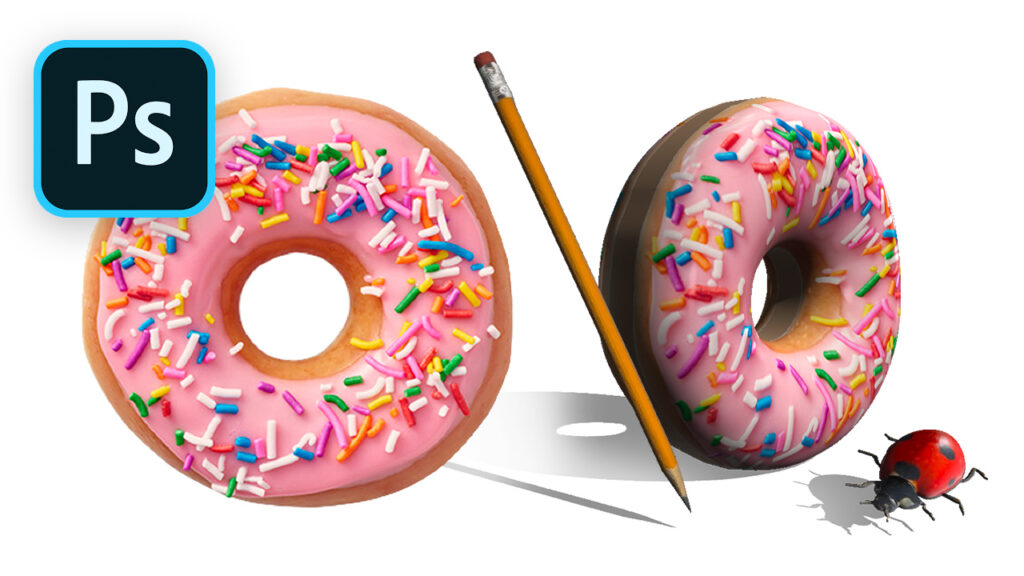Mastering Photorealism: A Comprehensive Guide to Creating 3D Objects from Photos in Adobe Photoshop

Introduction:
Adobe Photoshop, a powerhouse in digital design, continues to push creative boundaries by allowing artists to seamlessly integrate 3D elements into their 2D compositions. This comprehensive guide aims to unravel the intricacies of transforming ordinary photos into lifelike 3D objects in Adobe Photoshop. Whether you’re a seasoned designer or an aspiring artist, this guide provides detailed insights, step-by-step instructions, and professional tips to help you master the art of creating immersive 3D scenes.
Table of Contents:
- Introduction to 3D Object Creation in Adobe Photoshop:
- a. The Evolution of 3D Design in Photoshop
- b. The Significance of Photorealistic Elements
- c. Exploring the Versatility of 3D Objects in Digital Art
- Choosing the Right Photo for 3D Transformation:
- a. Assessing Image Composition and Quality
- b. Identifying Elements Suitable for 3D Conversion
- c. Recognizing Lighting Conditions for Realism
- Essential Preparations for 3D Object Creation:
- a. Understanding the Photoshop 3D Workspace
- b. Familiarizing Yourself with the 3D Panel and Tools
- c. Setting Up a Clear Workspace for Efficient Editing
- Creating Basic 3D Extrusions from Photos:
- a. Generating Extruded Shapes Using the 3D Panel
- b. Adjusting Extrusion Depth and Perspective
- c. Mapping Photos onto 3D Extrusions for Realism
- Refining 3D Shapes with Deformations and Mesh Manipulation:
- a. Employing Deformations for Custom Shapes
- b. Manipulating Meshes to Achieve Desired Forms
- c. Fine-Tuning Edges and Details for Realistic Results
- Applying Materials and Textures to Enhance Realism:
- a. Understanding Material Basics in Photoshop 3D
- b. Customizing Textures and Surface Properties
- c. Incorporating Reflections and Specular Highlights
- Integrating 3D Objects into Existing Photos:
- a. Matching Lighting and Perspective with the Scene
- b. Adjusting Shadows and Highlights for Cohesiveness
- c. Balancing Color Tones for Seamless Integration
- Simulating Realistic Lighting Conditions:
- a. Analyzing Directional Light Sources in the Photo
- b. Adjusting Ambient Light and Shadow Intensity
- c. Utilizing Spotlights and Point Lights for Emphasis
- Fine-Tuning Details for Photorealism:
- a. Refining Edges and Eliminating Unwanted Artifacts
- b. Adjusting Texture and Grain for Consistency
- c. Applying Depth of Field for Realistic Depth Perception
- Adding Atmospheric Effects for Enhanced Realism:
- a. Incorporating Fog, Mist, or Haze for Depth Perception
- b. Implementing Lens Flares and Light Rays
- c. Exploring Special Effects for Artistic Compositions
- Troubleshooting Common Challenges in 3D Object Creation:
- a. Addressing Perspective Discrepancies
- b. Dealing with Complex Scene Elements
- c. Avoiding Unnatural Halos and Distortions
- Saving and Exporting Images with 3D Objects:
- a. Choosing the Right File Format for Different Platforms
- b. Optimizing Images for Web or Print
- c. Preserving 3D Layers for Future Adjustments
- Inspirational Examples and Case Studies:
- a. Showcasing Noteworthy 3D Object Creations
- b. Breakdowns of Notable Challenges and Solutions
- c. Exploring Different Styles and Approaches in 3D Photorealism
Conclusion:
Creating 3D objects from photos in Adobe Photoshop elevates your digital artistry to new heights, merging the realms of reality and imagination. This comprehensive guide has equipped you with the knowledge and tools needed to seamlessly integrate lifelike 3D elements into your compositions. As you embark on your journey of 3D object creation, remember that experimentation, attention to detail, and a deep understanding of Photoshop’s capabilities will guide you towards crafting scenes that captivate and immerse your audience. So, dive into the world of 3D photorealism and let your creativity soar in ways that redefine the boundaries of digital art.




